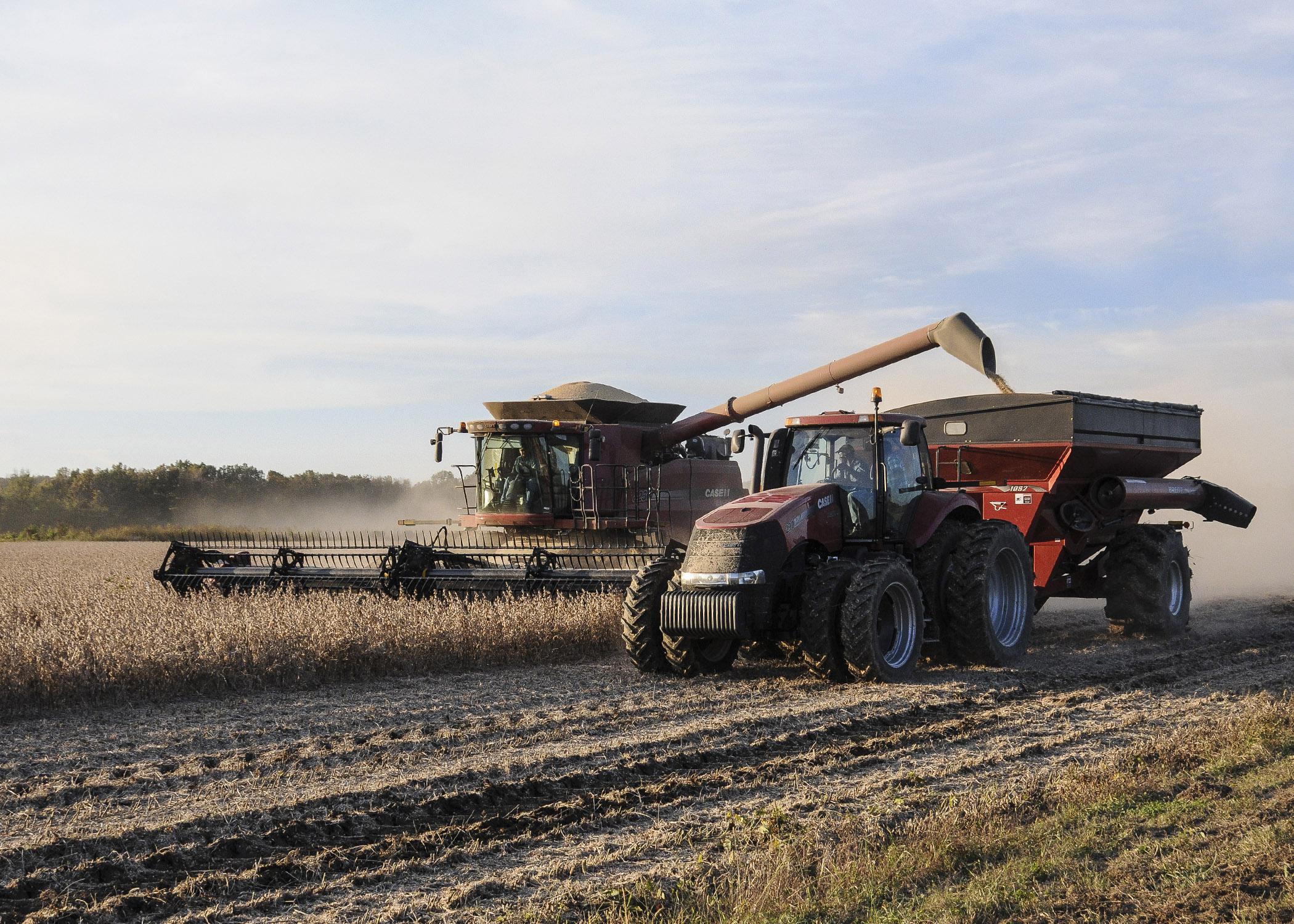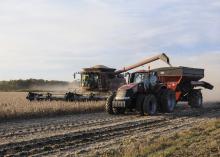Information Possibly Outdated
The information presented on this page was originally released on December 13, 2012. It may not be outdated, but please search our site for more current information. If you plan to quote or reference this information in a publication, please check with the Extension specialist or author before proceeding.
Record yields, prices push soybeans to No. 2
MISSISSIPPI STATE – A new record average yield of 42 bushels per acre pushed soybeans to a record value of more than $1 billion, boosting the crop to No. 2 among Mississippi’s agricultural commodities.
Soybeans have an estimated 2012 value of $1.16 billion, up 37 percent from $842 million in 2011. Soybeans came in behind poultry but for the first time were ahead of forestry in the ranking of the state’s top three crops.
Trent Irby, soybean specialist with the Mississippi State University Extension Service, said high yields and high prices combined to create this historic mark.
“Soybeans have been an important crop in Mississippi for a number of years,” Irby said. “In recent years, favorable market prices, as well as higher yields that many producers realized, have made soybeans a popular choice for our growers.”
Mississippi growers harvested an estimated 2 million acres of soybeans in 2012, which is an increase from 2011 acreage but still in line with recent averages. This figure puts Mississippi No. 12 nationally in soybean acreage.
“Favorable market prices as well as timely rains and light pest pressure across many areas helped make this a good year for soybeans,” Irby said.
Soybeans in Mississippi typically are planted during a wide window as a management strategy that, among other things, helps minimize risks associated with weather. In 2012, the state’s soybeans were planted from late March through early July.
“Even good years have challenges,” Irby said. “Lack of rainfall early in the growing season caused some of our soybean acres to suffer quite a bit. When our growers encounter a problem that can be managed, they manage it. However, no one can control the weather.”
Brian Williams, Extension agricultural economist, said soybeans began the year at $11.98 a bushel and slowly rose through spring to $14.70 a bushel in May. After slumping briefly, prices rose to a July 20 high of $17.90 a bushel.
“Soybean prices remained above $16 a bushel until late September as news of a better-than-expected harvest began to flow in,” Williams said. “Prices have been somewhat volatile in the fall but have mostly stayed within the $14 to $16 range.”
These high prices contributed to another record for soybeans. The U.S. Department of Agriculture estimates the market year average price for the crop is $14.55 per bushel, up from the previous record of $12 per bushel set in 2011.
Low soybean stocks and the drought in the Midwest drove soybean prices up over the summer, but better-than-expected nationwide yields led to a decrease in price.
“Right now, two of the biggest drivers of corn and soybean prices are outside the United States,” Williams said. “Commodity traders are closely watching the South American crop. Planting is under way in Argentina and Brazil, and their crop conditions will play a major role in where we find crop prices throughout the winter.
“We are also watching the European economic situation and its impact on the strength of the U.S. dollar,” he said. “The stronger the dollar, the more expensive our exports will be, which will drive down prices.”
Looking ahead to 2013, Irby said spring weather, commodity prices and input costs will be key factors in the decisions on how many soybean acres are planted in the spring. Early indications are that soybeans will remain a strong crop option in 2013.






